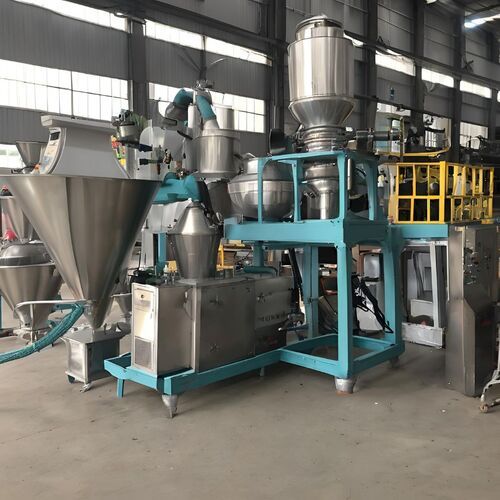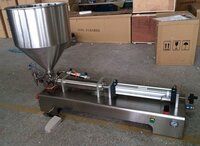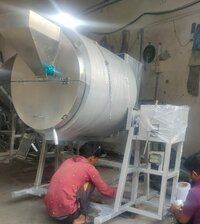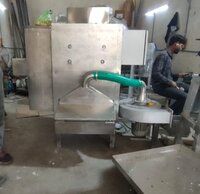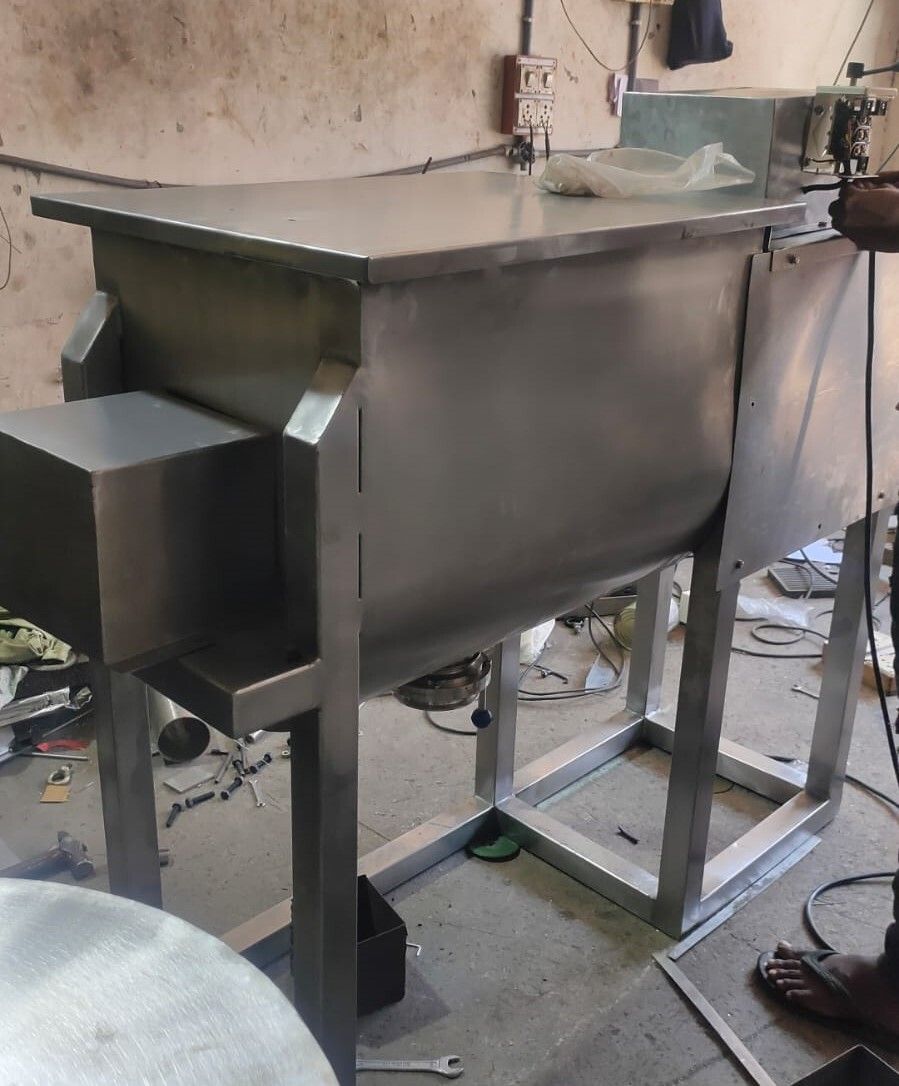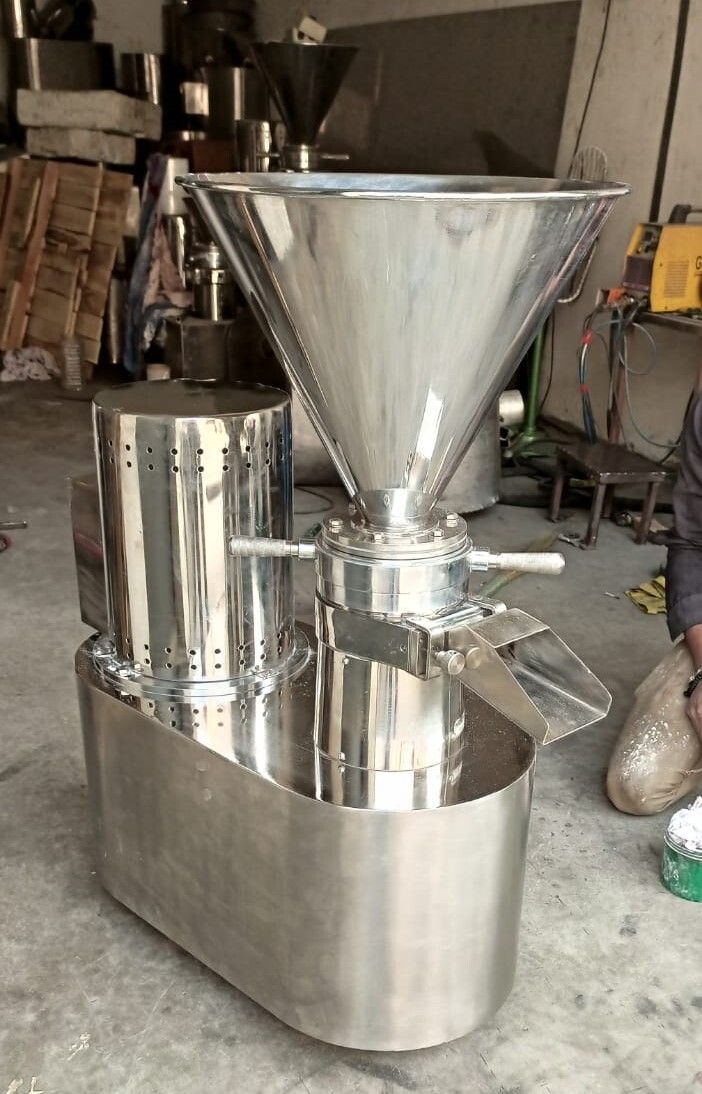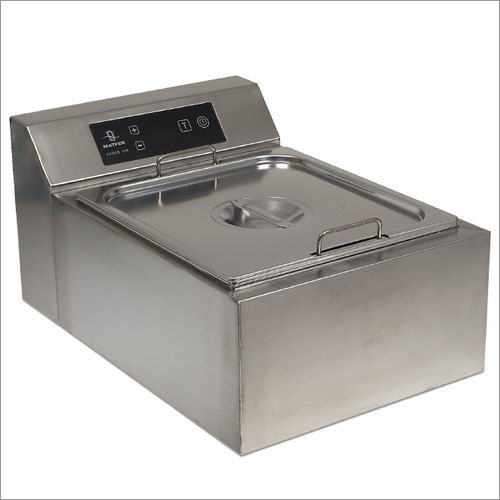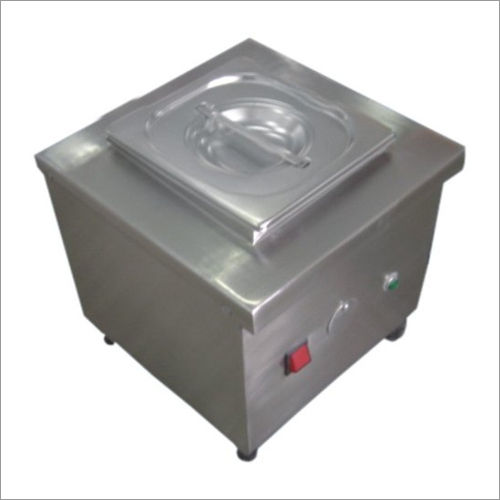- Home Page
- Company Profile
-
Our Products
- Roaster Machine
- Automatic Roaster Machine
- Peanut Roasting Machine
- Semi-Automatic Roaster Machine
- Gas Fired Roaster Machine
- Spice Roaster Machine
- Electrical Roaster Machine
- Innovative Industrial Roaster
- Cereals Roasting Machine
- Suji Roaster Machine
- Daliya Roasting Machine
- Foxnut Roaster Machine
- Dry Fruit Roaster Machine
- Dried Fruit Roaster Machine
- Sunflower Seed Roasting Machine
- Murmura Roaster Machine
- Namkeen Roaster Machine
- Roaster Flavouring Machine
- Continuous Roaster Machine
- Seeds Treatment Drum Machine For Mixing
- Coffee Roasting Machine
- Electrical Drum Roaster
- Poha Roaster Machine
- Grain Roasting Machine
- Besan Roasting Machine
- Chana Roasting Machine
- Sesame Roasting Machine
- Millet Roasting Machine
- Seeds Roasting Machine
- Supari Roasting Machine
- Flax Seed Roaster Machine
- Tea Dryer Machine
- Automatic Sattu Making Machine
- Corn Flakes Roaster Machinery
- Pan Roaster Machine
- Chutney Grinder
- Drum Roaster
- Dry Nut Mini Roaster
- Sesame Roaster
- Peanut Roaster Machine
- Maize Roasting Machine
- Commercial Peanut Roasting Machine
- Chestnut Roasting Machine
- Gram Roasting Machine
- Mini Roaster Machine
- Roasting Machine for Grains
- Cocoa Bean Roaster Machine
- Peanut Butter Roasting Machine
- Electric Nut Roasting Machine
- Pepper Roasting Machine
- Roaster Machine for Sale
- Roasted Chana Machine
- Mini Peanut Roaster
- Roaster Machines
- Electric Roasting Machine
- Idli Maker Machine
- Soybean Roasting Machine
- Nut Roasting Machine
- Rice Flour Roasting Machine
- Automatic Roasting Machine
- Drum Roaster Machine
- Spice Roasting Machine
- Grain Roasting Machine for Home
- Peanut Roaster For Sale
- Industrial Roaster Machine
- Commercial Peanut Roaster
- Dry Roaster Machine
- Cocoa Roasting Machine
- Chilli Roaster Machine
- Commercial Roasting Machine
- Masala Roasting Machine
- Drum Roasting Machine
- Commercial Rosters for Sale
- Peanut Roasting Machine for Sale
- Peanut Roaster Machine for Home
- Best Roasting Machine
- Uruli Roaster Machine
- Roasting Machine
- Roasting Machine
- Ribbon Blender Machine
- Ribbon Blender
- Vertical Ribbon Blender
- Fortified Rice Blending Machines
- Ribbon Mixer Machine
- Ribbon Blender Mixer
- Chemical Ribbon Blender
- Asafoetida Mixing Machine
- Tea Blending Machine
- Gum Powder Mixing Machine
- High Speed Ribbon Blender
- Powder Mixer Machine
- Detergent Cake Making Machines
- Tile Adhesive Mixing Machine
- Ribbon Type Blender
- U Type Ribbon Blender
- Jacketed Ribbon Blender
- SS Mixing Equipment
- Industrial Mixer Machine
- Tilting Bowl Ribbon Blender Machine
- Mixing Blending Machine
- Stainless Steel Drum Blender
- V Blender Machine
- Horizontal Flour Mixer Machine
- Octagonal Blender Machine
- SS V Blender
- HORIZONTAL POWDER MIXER BLENDER
- Industrial Ribbon Blender Powder Mixer Machine
- Ribbon Blender Powder Mixer
- RIBBON BLENDER MIXER MACHINE FOR INDUSTRIAL
- DRY POWDER MIXER RIBBON BLENDER
- INDUSTRIAL RIBBON MIXER BLENDER MACHINE
- Horizontal Ribbon Blender
- INDUSTRIAL RIBBON BLENDER MIXER
- RIBBON BLENDER MIXER MACHINE
- POWDER MIXER RIBBON BLENDER
- DRY CHEMICAL POWDER MIXER RIBBON BLENDER
- Ribbon Blender Mixing Machine
- Peanut Butter Making Machine
- Small Peanut Butter Machine
- Peanut Butter Making Machine
- Peanut Butter Grinding Machine
- Innovative Peanut Butter Machine
- Innovative Nut Butter Mill
- Peanut Butter Manufacturing Plant
- Peanut Butter Machine with Primary and Secondary Grinding
- Almond Butter Making Machine
- Peanut Butter Filling Machine
- Peanut Butter Mill
- Nut Butter Grinding Mill Machine
- Automatic Mustard Sauce Making Machine
- Machine For Peanut Butter
- Tomato Paste Making Machine
- Innovative Peanut Skin Removing Machine
- Shea Butter Machine
- Tahini Making Machine
- Chilly Sauce Processing Machine
- Ginger Garlic Paste Making machine
- Tablet Coating Machine
- Fruit and Vegetable Processing Machinery
- Chocolate Coating Machine
- Mass Mixer Machine
- Colloid Mill Machine
- Tablet Punches And Dies
- Pharma Machinery
- Liquid Filling Machine
- Double Cone Blender
- Steel Tank
- Spice Masala Mixing Machine
- Chocolate Machine
- Ayurvedic Pills Making Machine
- Vibro Sifter Machine
- Tray Dryer
- Mixer For Semi Liquid
- Food Processing Machinery
- GRAVY MACHINE
- Tomato Sauce Making Machine
- Tomato Ketchup And Sauce Making Machine
- Food Dryer Machine
- Mayonnaise Making Machine
- Tilting Paste Kettle
- Chilli Grinding Machine
- Fertilizer Granule Rotary Drying Machine
- Innovative Steam Jacketed Kettle
- Rotary Vacuum Dryer
- Cashew Nut Processing Plant
- POUCH PACKING MACHINE
- Rotary Tablet Press Machine
- Mini Rotary Tablet Press Machine
- Tablet Compression Machine
- Veterinary Bolus Tablet Press Machine
- GMP Tablet Press Machine
- Slugging Tablet Press Machine
- Bilayer Tablet Press Machine
- Standard Rotary Tablet Press Machine
- Double Rotary Tablet Press
- Bi Layer Tablet Compression Machine
- Salt Tablet Press Machine
- Innovative Tablet Manufacturing Machine
- Camphor Tablet Press Machine
- Tablet Making Machine
- High Speed Tablet Press Machine
- Tablet Hardness Tester
- Single Rotary Tablet Press Machine
- Capsule Filling Machine
- Tablet Dust Extractor Machine
- Multi Punch Tableting Machine
- Tablet Deburring Machine
- Rotary Tablet Making Machine
- Non GMP Tablet Making
- Single Punch Tablet Press Machine
- Powder Mixer Machine
- Pharmaceutical Machinery Spare Parts
- Tablet Punching Machines
- Pharmaceutical Furniture
- Machine Design Service
- Grain Storage Silo
- Roasting Machine
- Powder Mixer
- Peanut butter machine
- Peanut Split Nut Blancher
- Ground Nut Shelling Machine
- Peanut Butter Plant
- Roaster Machine
- Contact Us
Peanut Almond Cashew Hazelnut Walnut Butter Machine
1000000 INR/Piece
Product Details:
- Product Type Automatic
- General Use Generarl
- Material Stainless Steel
- Type Automatic Confectionery Machine, Candy Making Machine, Confectionery Bar Machine, Confectionery Coating Machine
- Capacity 1000 Kg/hr
- Weight (kg) 1000 Kilograms (kg)
- Computerized Yes
- Click to View more
X
Peanut Almond Cashew Hazelnut Walnut Butter Machine Price And Quantity
- 1 Piece
- 1000000 INR/Piece
- 700000.00 - 1500000.00 INR/Piece
Peanut Almond Cashew Hazelnut Walnut Butter Machine Product Specifications
- Electric
- Automatic
- Good Quality, High Efficiency, LED Touch Panel, High Speed, Automatic Feeding
- Automatic Confectionery Machine, Candy Making Machine, Confectionery Bar Machine, Confectionery Coating Machine
- Stainless Steel
- Yes
- 1 Sets/Hour
- 1 Set
- Yes
- 1000 Kg/hr
- 415 Volt (v)
- PLC Control
- 1000 Kilograms (kg)
- Yes
- Generarl
- 1 Year
- 60 x 60 x 60 Inch (in)
Peanut Almond Cashew Hazelnut Walnut Butter Machine Trade Information
- Cash Against Delivery (CAD), Cash Advance (CA), Cash in Advance (CID)
- 10 Piece Per Month
- 1 Week
- Asia
Product Description
An innovative peanut butter manufacturing plant would focus on advanced technologies, sustainable practices, and unique product offerings. Here's an overview of how such a facility might operate:
1. Advanced Technology Integration
- Automation & Robotics: Implement robotic systems for shelling, roasting, grinding, and packaging to increase efficiency and reduce labor costs.
- Smart Sensors: Use IoT sensors to monitor humidity, temperature, and contamination levels, ensuring optimal product quality.
- AI & Machine Learning: Deploy AI algorithms to predict equipment maintenance needs, optimize production schedules, and analyze consumer preferences for product development.
2. Sustainable Practices
- Energy Efficiency: Utilize solar panels, energy-efficient machinery, and heat recovery systems to minimize energy consumption.
- Water Conservation: Implement water recycling systems and drought-resistant peanut varieties to reduce water usage.
- Waste Management: Convert peanut shells and other by-products into bioenergy or compost, minimizing waste.
- Eco-Friendly Packaging: Develop biodegradable or recyclable packaging to reduce environmental impact.
3. Product Innovation
- Nutritional Variants: Offer peanut butter with added vitamins, minerals, or protein to cater to health-conscious consumers.
- Flavored Varieties: Introduce unique flavors like honey-roasted, spicy chili, or chocolate-infused peanut butter.
- Allergen-Free Options: Produce peanut butter alternatives made from other nuts or seeds for consumers with peanut allergies.
- Customizable Products: Use AI and online platforms to allow consumers to customize their peanut butter (e.g., texture, sweetness level, added ingredients).
4. Sustainable Sourcing & Community Engagement
- Fair Trade & Local Sourcing: Partner with local and fair-trade peanut farmers to ensure ethical sourcing practices.
- Community Engagement: Host educational programs, tours, and workshops to involve the local community and promote sustainable practices.
5. Quality Control & Safety
- HACCP & ISO Certification: Adhere to strict food safety standards, including Hazard Analysis Critical Control Point (HACCP) and ISO certifications.
- Traceability: Implement blockchain technology to track peanuts from farm to jar, ensuring transparency and quality.
6. Marketing & Distribution
- E-commerce & Subscription Services: Offer direct-to-consumer sales through an e-commerce platform, with options for subscription-based deliveries.
- Global Reach: Utilize international partnerships to distribute products globally, focusing on emerging markets with growing demand for peanut products.
- Sustainability Branding: Market the plant's sustainable practices and product innovations as key selling points.
7. Research & Development
- Continuous Innovation: Invest in R&D to explore new peanut-based products, improve processing techniques, and enhance sustainability.
- Collaborations: Partner with universities, research institutions, and other food manufacturers to stay at the forefront of innovation.
This approach combines cutting-edge technology, sustainability, and product diversity, positioning the plant as a leader in the peanut butter industry.
Tell us about your requirement

Price:
Quantity
Select Unit
- 50
- 100
- 200
- 250
- 500
- 1000+
Additional detail
Mobile number
Email


